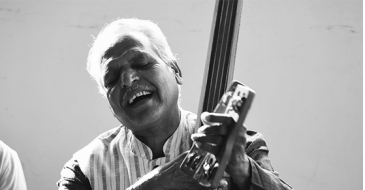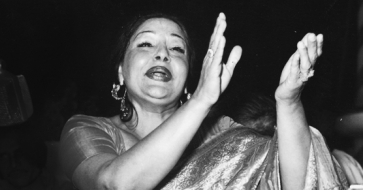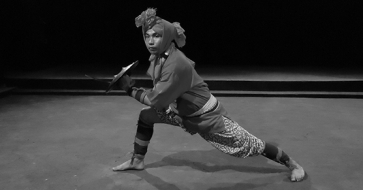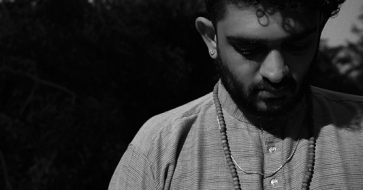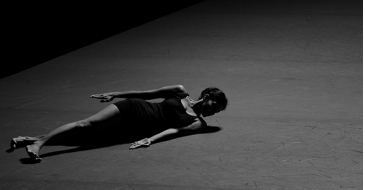In a recent interview, you used the word ‘analytical’ to describe your approach to the idea and unravelling of mythology? Can you explain how that works and where you developed this deep, analytical bent of mind?
It means first gathering data, the source of the data, and then deciphering the intent behind the data. For example, the idea of Krishna as an avatar of Vishnu, is an idea that is suggested in the Mahabharata but the word ‘avatar’ is not used. The oldest Mahabharata we have now, is about 2,000 years old. But the idea of avatar emerges in Puranic literature around 1,500 years ago, around the same time when the idea of Krishna’s pastoral origins came to be highlighted in the Harivamsa. These were written in Sanskrit and so most probably by Brahmins.
Did these ideas exist before the Sanskrit texts? Amongst whom? Why did Brahmins find it worthy of documentation? An analytical approach tends to ask these questions. Analytical approach also asks questions like what is the meaning of ‘avatara’ actually, and how, for instance, is it different from ‘superhero’.
Analysis involves gathering, identification, classification and correlation of data eventually leading to a synthesis. So, it’s essentially about breaking down (analysis/samkhya) followed by building up (synthesis/yoga). This is part of my background in science; you must know that I trained in medicine. And I found that training useful to understand the complexities of mythology.
How does the word analysis find place in your art and craft of storytelling - in the written and the spoken word?
My expertise is in mythology. Storytelling is a very minor, but the most popular part, of it. Mythology is about analyzing stories, symbols and rituals, and figure out why they exist and what ideas they seek to communicate. Everything in the world can be analysed, broken down to its parts, so as to understand the whole. For example, a story has plots and characters. A story has various forms of expression - text, image, musical, verbal, gestures, expressions, colours, sounds, geometry. A story has language, grammar, vocabulary, intonations. A story has versions, editions. A story has a history and a geography. A story can be seen as a set of stimuli aimed at evoking various sensations (rasa) and emotions (bhava) and ideas (vichara). Each one grants us an insight into the human mind.
When did you know that you wanted to be a storyteller? Did you, as a child, enjoy listening and telling stories?
It is interesting that you call me a storyteller and I call myself a mythologist. Storytelling is a skill that does not need knowledge of mythology. Mythology is a scholarship that need not be accompanied with storytelling. I happen to be a good orator and an amateur stage performer, and that enables me to be good at storytelling in public. But that is only an expression of all that I do. I also illustrate and design my books, but I would not call myself either an illustrator or a designer. These are parts of the whole that is mythology, a subject neglected in India, and poorly understood in academic circles, because of its ‘meta’, even ‘post-modern’, nature, and also because today study of humanities is contaminated by self-indulgent activism.
I know this is a question on stories again but I’m curious about your favourite story, while growing up?
The Ramayana. And it continues to be so. The most complicated story that reveals so much about the human mind, our eagerness to judge, which is essentially our eagerness not to think about the complexities of life.
All the gods and demons are located in all our minds manifesting depending on context. A person behaving like Ram one moment can be Sita in another and Ravana in the next, even Kumbhkarna, or the golden deer. That is why we bow to all living creatures and say Namaste, I salute the divine within you: what you can become
As an adult, has your relationship with that story, for instance, changed?
I realize that there is no such thing as the truth. There is knowledge that we communicate a story to give ourselves meaning. When Stephen Hawking writes about the origin of the cosmos, you realize how he is actually telling you a wonderful story that explains his life, his struggles, his limited knowledge (he is not a student of biology or psychology or humanities, yet insists on revealing the secrets of the cosmos) much like Adi Shankara was told by Ubhaya Bharati that as a celibate man his knowledge was limited, and not cosmic. Stories help us locate ourselves in the world. Without it we have no value, no purpose, no meaning.
Is mythology a normal, everyday life activity or is it a genre that you engage with, always with a certain intent and purpose, now that it is also your profession?
When I see a person, I wonder what myth he or she resides in. What is the narrative that he tells himself to explain his or her existence, her value or purpose. And what is that narrative influenced by – the narrative ecosystem that he or she grew up in. For example, a Mudaliar girl in Chennai lives in a different myth as compared to a Bania boy in New Jersey. The stories they value, and the story they tell themselves and others, about themselves and others, reveals their truth, their world-view, their myth. Each one is a Brahma creating as well as inhabiting his own Brahmanda. I see mythology everywhere, in every moment, provided there are human beings, or human things, to deal with.
Over the years of engaging deeply and intently with it, has your very relationship with mythology changed?
Originally, like with everyone else, mythology for me was Iliad, Bible, the Ramayana, and other such popular texts. Over time, I realized that myths are also communicated through rituals, and symbols. Then I realized these stories, symbols and rituals are mere vehicles of world-views. Then I realized the multiple worldviews function like memes (to use Richard Dawkin’s very famous term) vying for survival through culture. And that they are prevalent even today, in every human being, in every culture. Very different from the very pedestrian idea, popular amongst internet radicals, that India has mythology and the West has rationality, or that Christianity is religion and Hinduism is mythology. Sadly, the pedestrian idea is the dominant idea in the world. It has always been so. Refined ideas demand too much brain-activity and either we don’t have the capacity, or the will, or even the resource (time).
Is the process of engagement with mythology a very immersive experience for you? For instance, when you work on a particular idea or subject, are you singularly only soaking in it?
It is. Mythology is an ocean. Every time I pick up a subject, I know I am dealing with just a pond. But the water in the pond tells me always a little bit about other ponds and eventually the ocean. My book, Olympus forced me go deep into Greek mythology which revealed why so many Hollywood stories, and now Bollywood stories, are consumed by the hero myth and violence, different from the Jain and Buddhist myths, for example.
You also often use the word, rigour, discipline while referring to mythology. Tell us a little about what those words mean to you, in the way you approach mythology?
It means reminding yourself that you are in the myth too. You have a point of view, a world-view. That you have a story that gives you meaning and identity, and you use it to dominate others. This story of yours contaminates your scholarship always. There is no escaping. Awareness makes you less smug and more sensitive. That is rigour. I see so much chauvinism in the work of academicians who have forgotten that academia is not activism. Live activism to social reformers and politicians. Scholarship demands being a dispassionate observer, not a revolutionary.
I remember days when I struggled with defining mythology. And days when I wondered why the West sees Indian myths so differently. Or why Indians are unable to appreciate Western myths, or why even Westerners are unable to appreciate their own myths. This led me to better understand psychology, art, linguistics, semiotics, management, politics, economics, poetry, religion, grammar, music. Now it seems a bit easier, but I am always wary of becoming complacent. I am also at peace with the idea that I can see only part of the whole picture. Infinity will always be elusive
Do you believe that these stories of mythology really unfolded at some point in time? And if yes, what is the foundation of your faith? If not, how do you deeply internalise something that is mere text to inspire and motivate people to live lives that are interesting…
We can see these stories in history if we want to. But essentially they stories are grids (yantra, in Sanskrit) created by the imagination to make the world meaningful and sensible for human consumption. The point is not the story itself but the structure underlying the story. I see the structure not just in the story, but also in rituals and symbols, in myself and in others, shaping human culture constantly. Without these grids, we are lost like (to use a mythological visual) people drowning in an ocean of milk. This grid transforms us from animals to humans – we get identity, purpose, value, meaning. If humans did not have the cerebrum, hence imagination, we would not seek meaning, and hence we would not create these structures of the mind, these memes, and communicate it via stories, symbols and rituals. To seek whether they ‘actually’ happened in the past or in a particular place, is to deny the inner reality of the mind and seek validation in history and geography. Those who don’t find Ram, or Ravan, or Sita, within themselves are busy seeking them in Ayodhya, Lanka and Mithila, somewhere in South Asia, 10,000 years ago, lack of evidence notwithstanding.

What dictates your choice of an idea? Are you always thinking of your audience when you want to communicate? Have there been cases - either in your talks or your books - where you have felt that you have been very fascinated with an idea but perhaps the audience isn’t excited enough?
I am a strong believer in Natya Shastra. The purpose of a book or a lecture is to churn sensations (rasa), emotions (bhava) and ideas (vichar) in the audience using words, sounds, images, gestures. However, I want to churn their mind using ideas, emotions and sensations that I have experienced in my study of mythology. So the exercise is a ‘churn’ (manthan), where I sometimes pull the audience towards what I want to show, and sometimes let them pull me towards what they seek. It does not work all the time, always because I failed to understand the audience, either I over/under estimated them, or me. The greatest danger is vanity or arrogance, where I feel I don’t need to be alert or sensitive or caring and the audience will just submit no matter what I present.
Over the years of distilling mythology and drawing ideas that resonate with a very contemporary world, has this distilling process itself become easy?
Yes, it has. I remember days when I struggled with defining mythology. And days when I wondered why the West sees Indian myths so differently. Or why Indians are unable to appreciate Western myths, or why even Westerners are unable to appreciate their own myths. This led me to better understand psychology, art, linguistics, semiotics, management, politics, economics, poetry, religion, grammar, music. Now it seems a bit easier, but I am always wary of becoming complacent. I am also at peace with the idea that I can see only part of the whole picture. Infinity will always be elusive.
In your book, Olympus, an Indian re-telling of Greek myths, you have attempted to draw similarities and differences between Indian and Greek mythology? What inspires you to constantly seek these connections?
I see people obsessed with ideas of singularity and homogeneity around me. The pursuit of ‘the’ truth, which I have come to realize, is the major cause of human pain and suffering. India is the land that provided the world the tools to cope with plurality and heterogeneity. But this knowledge is overlooked, undermined, forgotten. We need to re-discover and share it with the world. Comparing and contrasting Indian myth with Greek and Abrahamic myth is one way of drawing attention to the very unique and useful Indian meme.
Would you think that to be a seeker, one has to be inherently curious as a person? Would you think of yourself as that way? Were you always like that?
All living creatures are seekers. We seek either food or security or meaning. If a creature stops seeking, it dies. I am just aware of what I am seeking – the Indian myth, and a meaning for myself through the quest for the Indian myth. Most of the times, people are not.
Personally, how enriching has soaking up in the culture of mythology been for you? What have been your learnings? Could you share a few with us?
I have bought a large apartment in Mumbai. It would not have been possible without mythology. So yes, it has been very enriching, materially. Even more enriching is the fact that material growth has been accompanied by psychological fulfillment.
As a communicator, would you think you have been integral in enabling mythology to become a little more accessible to a contemporary culture?
I do what I do. The rest is for the world to decide. Mango trees produces mangoes. It does not seek to change dietary habits of people. Such is the Indian way, in my reading. To change the world is for the prophet, a meme from Abrahamic mythology.
Since you have deeply explored Indian mythology and the characters from it, do you sometimes find yourself, almost subconsciously categorising or seeing traits of characters from mythology in the people you meet on an everyday basis? Does that happen, ever/often?
All the gods and demons are located in all our minds manifesting depending on context. A person behaving like Ram one moment can be Sita in another and Ravana in the next, even Kumbhkarna, or the golden deer. That is why we bow to all living creatures and say Namaste, I salute the divine within you: what you can become.
Interviewed by Akhila Krishnamurthy
0 comments Comments





